ShopDreamUp AI ArtDreamUp
Deviation Actions
Birds, Part I: Palaeognathae, Anseriformes, Galliformes ciameth.deviantart.com/journal…
Birds, Part II: Columbiformes, Pteroclidiformes, Eurypygidae and Rhynochetidae, Mesitornithiformes, Phaethontiformes, Opisthocomiformes, Podicipediformes and Phoenicopteriformes ciameth.deviantart.com/journal…
Birds, Part III: Apodiformes, Aegotheliformes, Caprimulgiformes, Musophagiformes, Cuculiformes, Otidae and Gruiformes ciameth.deviantart.com/journal…
Birds, Part IV: Pelecaniformes, Procellariiformes, Ciconiiformes, Sphenisciformes, and Gaviiformes ciameth.deviantart.com/journal…
Birds, Part V: Charadriiformes, Cariamae and Coliiformes ciameth.deviantart.com/journal…
Birds, Part VI: Accipitriformes, Strigiformes, Trogoniformes and Bucerotiformes ciameth.deviantart.com/journal…
Birds, Part VII: Coraciiformes, Piciformes, Leptosomatiformes, Falconiformes and Psittaciformes ciameth.deviantart.com/journal…
This is the final part of my bird phylogeny feature series, and it focuses solely on Passeriformes, the "Perching Birds." With over 110 families and 5,000 species (more than half of all birds), Passeriformes is the largest order. As it would be impossible to find an image representing each family, I will be featuring a combination of the suborders and the larger families of Passeriformes. These are fascinating birds with huge variety in appearance, behavior, and lifestyle. On average, passerine species are smaller than those of other orders; the largest passerine is the Thick-billed Raven (~3.3 pounds) and the smallest is the Short-tailed Pygmy-tyrant (.15 oz). All passerines have typical anisodactly feet (meaning three toes forward and toe #1 pointing back) with no webbing at all--not even in the aquatic species like the Dippers. A special perching mechanism in their legs automatically tightens their grasp when their legs bend. This mechanism allows them to relax while perching without worrying about falling off, even while asleep, on a moving branch, or in a storm!
There are three main suborders in the order Passeriformes. The two most basal are Acanthisitti, the New Zealand Wrens, and the suboscines. Acanthisitti contains only one family, Acanthisittidae, with five living species. All other New Zealand Wrens--like so many other island birds--went extinct following human colonization of the island. There are 17 suboscine families, the Pipridae (Manakins, who have awesome moonwalking skills www.youtube.com/watch?v=i-wtO7…), Cotingidae (Cotingas, included the fabulous Cock-of-the-Rock www.youtube.com/watch?v=zbAuRz…), Tityridae (Tityras), and Tyrannidae (the tyrant flycatchers, which includes the most awesome bird you've never seen, the Royal Flycatcher farm4.static.flickr.com/3469/3… farm4.static.flickr.com/3565/3…) in Tyranni, Eurylaimidae (broadbills), Philepittidae (asities), Sapayoidae (the Broad-billed Sapayoa), and Pittidae (pittas) in Eurylaimides and nine in the Funarii (Ovenbirds, antbirds, etc). Suboscines are so called because they have a less developed syrinx than the Oscines, the final major suborder.
:thumb177227710: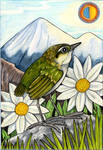 :thumb136564803:
:thumb136564803:




The name Oscine comes from "oscen," which is Latin for "songbird." All birds in this suborder have elaborate calls used both in courtship and to communicate status and location. The most basal group of oscines are the sister families Menuridae (lyrebirds) and Atrichornithidae (scrubbirds). These two families have few species. The lyrebird is known as the greatest mimicker of the bird world, and excellently demonstrates the vocal abilities of Oscines in this BBC video: www.youtube.com/watch?v=VjE0Kd… second most basal group of oscines are the sister families Ptilonorynchidae (bowerbirds) and Climacteridae (Australian treecreepers). Bowerbirds have, in my opinion, the most spectacular courtship of ANY bird species. They don't do it with flashy feathers, or acrobatic dances, but by building a bower. The basic design of the structure is specific to species, but each individual personalizes its bower to its own aesthetic principles. Not only are these birds intelligent, but they are the true artists of the animal kingdom. I highly recommend David Attenborough's Bowerbirds: The Art of Seduction for anyone who wants to learn more about these birds. It is available in its entirety on youtube here: www.youtube.com/watch?v=eJOX0W…



Family Meliphagidae is one of my three favorite families in the order (the other two being Corvidae, and Parulidae). There are so many beautiful, unique-looking species in this group and the bare faces on many of the species appeal to me, since they remind me vultures (and I adore vultures). If it were five times the size, I think the Friarbird could better pass for a vulture than some vultures could (lammergeier)!
:thumb103059890: :thumb99955107:
:thumb99955107:

:thumb97452276::thumb180850435: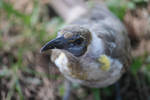
Pomatostomidae (Australo-papuan Babblers), Orthonychidae (logrunners), Cnemophilidae (Satinbirds, once considered Birds of Paradise), Callaeatidae (New Zealand wattlebirds), and Melanocharitidae (berrypeckers) are the last basal families before reaching the two major parvorders of Passeriformes. One sad story in this group belongs to the Huia upload.wikimedia.org/wikipedia…, a Callaeatidae that went extinct in the 20th century. Due to geographic isolation, New Zealand has many rare birds unlike those found anywhere else in the world; most of these were lost once humans, and rats, colonized the island. With the population already declining from deforestation pressure, the Huia suffered heavy hunting losses for their silky tail feathers, which were used in hats. Once it was realized how rare these birds were, they were hunted even more--but not for the same reason. Instead of setting up preserves or captive breeding programs, the museums and collectors of the day all decided they had to have a Huia specimen before they were all gone. By the 1920's, the Huia truly was gone.


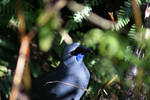
Containing ~34 groups (some of which are long-established families, others subfamilies, etc), Corvida is the first of the two parvorders. Corvida, of course, contains the Corvidae (crows, ravens, magpies, and jays). Corvids are among the most intelligent of all animals, exhibiting advanced problem-solving, self-recognition, and tool-making abilities. All corvids have strong feet and beaks, and only molt once a year.
:thumb49287300:
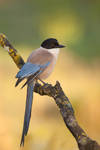



Other notable families in Corvida include the Laniidae (true shrikes--Corvida contains six other families that go by shrike in some part of the name), Vireonidae (vireos), Monarchidae (monarch flycatchers, superficially very similar to the tyrant flycatchers mentioned earlier), Paradisaeidae (the Birds of Paradise), and Artamidae (the woodswallows) with the closely related Currawongs, Butcherbirds, and Australian Magpie.

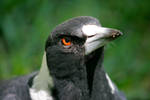 :thumb101045916:
:thumb101045916:


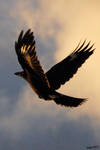

Containing ~26 groups, Passerida is the second of the two parvorders. Basal families in the order include the Picathartidae (Rockfowl), Eupetidae (Whipbirds and Jewel Babblers), Chaetopidae (Rockjumpers), Petroicidae (Australian Robins), Regulidae (Kinglets), Promeropidae (Sugarbirds), and Hyliotidae (Hyliotas).
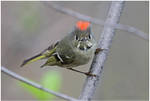 :thumb113064768:
:thumb113064768:

There are four superfamilies in the Passerida parvorder, Sylvioidea (Old World Warblers, Babblers, Swallows, Larks, Chickadees, Tits, Grassbirds, and more), Muscicapoidea (Waxwings, Dippers, Thrushes, Oxpeckers, Starlings, and more), Certhioidea (Nuthatches, Treecreepers, Gnatcatchers, and Wrens), and Passeroidea (Old World Sparrows, Weavers, Accentors, Pipits, Wagtails, Flowerpeckers, Sunbirds, Fairybluebirds, and the Nine-primed Oscine clade).
:thumb168988889::thumb139731519::thumb157049529:

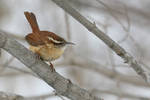

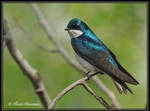
 :thumb200177649:
:thumb200177649:
:thumb168985693: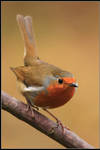


Nine-primed Oscines are special because their first primary feather is so reduced it may be absent in some species, and is difficult to distinguish as a primary in the others. Other birds have ten full primaries. There are eight families in this clade, the Parulidae (New World Warblers), Icteridae (Blackbirds), Emberizidae (New World Sparrows and Old World Buntings), Thraupidae (Tanagers), Cardinalidae (Grosbeaks), the Calcarius genus (which does not yet have a family name, and used to belong to Emberizidae; longspurs and snowbuntings), the genus Plectrophenax (in the same situation as Calcarius; McKay's Bunting and the Snow Bunting), and Fringillidae (Finches).
:thumb114974557:

 :thumb148853253:
:thumb148853253:


 :thumb125971953:
:thumb125971953:
For a complete look at Passeriformes, visit The Tree of Life tolweb.org/tree/phylogeny.html, which is the phylogeny I used for my Birds feature series. And that's all, the end Hope you enjoyed it!
Hope you enjoyed it!
Birds, Part II: Columbiformes, Pteroclidiformes, Eurypygidae and Rhynochetidae, Mesitornithiformes, Phaethontiformes, Opisthocomiformes, Podicipediformes and Phoenicopteriformes ciameth.deviantart.com/journal…
Birds, Part III: Apodiformes, Aegotheliformes, Caprimulgiformes, Musophagiformes, Cuculiformes, Otidae and Gruiformes ciameth.deviantart.com/journal…
Birds, Part IV: Pelecaniformes, Procellariiformes, Ciconiiformes, Sphenisciformes, and Gaviiformes ciameth.deviantart.com/journal…
Birds, Part V: Charadriiformes, Cariamae and Coliiformes ciameth.deviantart.com/journal…
Birds, Part VI: Accipitriformes, Strigiformes, Trogoniformes and Bucerotiformes ciameth.deviantart.com/journal…
Birds, Part VII: Coraciiformes, Piciformes, Leptosomatiformes, Falconiformes and Psittaciformes ciameth.deviantart.com/journal…
This is the final part of my bird phylogeny feature series, and it focuses solely on Passeriformes, the "Perching Birds." With over 110 families and 5,000 species (more than half of all birds), Passeriformes is the largest order. As it would be impossible to find an image representing each family, I will be featuring a combination of the suborders and the larger families of Passeriformes. These are fascinating birds with huge variety in appearance, behavior, and lifestyle. On average, passerine species are smaller than those of other orders; the largest passerine is the Thick-billed Raven (~3.3 pounds) and the smallest is the Short-tailed Pygmy-tyrant (.15 oz). All passerines have typical anisodactly feet (meaning three toes forward and toe #1 pointing back) with no webbing at all--not even in the aquatic species like the Dippers. A special perching mechanism in their legs automatically tightens their grasp when their legs bend. This mechanism allows them to relax while perching without worrying about falling off, even while asleep, on a moving branch, or in a storm!
There are three main suborders in the order Passeriformes. The two most basal are Acanthisitti, the New Zealand Wrens, and the suboscines. Acanthisitti contains only one family, Acanthisittidae, with five living species. All other New Zealand Wrens--like so many other island birds--went extinct following human colonization of the island. There are 17 suboscine families, the Pipridae (Manakins, who have awesome moonwalking skills www.youtube.com/watch?v=i-wtO7…), Cotingidae (Cotingas, included the fabulous Cock-of-the-Rock www.youtube.com/watch?v=zbAuRz…), Tityridae (Tityras), and Tyrannidae (the tyrant flycatchers, which includes the most awesome bird you've never seen, the Royal Flycatcher farm4.static.flickr.com/3469/3… farm4.static.flickr.com/3565/3…) in Tyranni, Eurylaimidae (broadbills), Philepittidae (asities), Sapayoidae (the Broad-billed Sapayoa), and Pittidae (pittas) in Eurylaimides and nine in the Funarii (Ovenbirds, antbirds, etc). Suboscines are so called because they have a less developed syrinx than the Oscines, the final major suborder.
:thumb177227710:
 :thumb136564803:
:thumb136564803:




The name Oscine comes from "oscen," which is Latin for "songbird." All birds in this suborder have elaborate calls used both in courtship and to communicate status and location. The most basal group of oscines are the sister families Menuridae (lyrebirds) and Atrichornithidae (scrubbirds). These two families have few species. The lyrebird is known as the greatest mimicker of the bird world, and excellently demonstrates the vocal abilities of Oscines in this BBC video: www.youtube.com/watch?v=VjE0Kd… second most basal group of oscines are the sister families Ptilonorynchidae (bowerbirds) and Climacteridae (Australian treecreepers). Bowerbirds have, in my opinion, the most spectacular courtship of ANY bird species. They don't do it with flashy feathers, or acrobatic dances, but by building a bower. The basic design of the structure is specific to species, but each individual personalizes its bower to its own aesthetic principles. Not only are these birds intelligent, but they are the true artists of the animal kingdom. I highly recommend David Attenborough's Bowerbirds: The Art of Seduction for anyone who wants to learn more about these birds. It is available in its entirety on youtube here: www.youtube.com/watch?v=eJOX0W…



Family Meliphagidae is one of my three favorite families in the order (the other two being Corvidae, and Parulidae). There are so many beautiful, unique-looking species in this group and the bare faces on many of the species appeal to me, since they remind me vultures (and I adore vultures). If it were five times the size, I think the Friarbird could better pass for a vulture than some vultures could (lammergeier)!
:thumb103059890:
 :thumb99955107:
:thumb99955107:

:thumb97452276::thumb180850435:

Pomatostomidae (Australo-papuan Babblers), Orthonychidae (logrunners), Cnemophilidae (Satinbirds, once considered Birds of Paradise), Callaeatidae (New Zealand wattlebirds), and Melanocharitidae (berrypeckers) are the last basal families before reaching the two major parvorders of Passeriformes. One sad story in this group belongs to the Huia upload.wikimedia.org/wikipedia…, a Callaeatidae that went extinct in the 20th century. Due to geographic isolation, New Zealand has many rare birds unlike those found anywhere else in the world; most of these were lost once humans, and rats, colonized the island. With the population already declining from deforestation pressure, the Huia suffered heavy hunting losses for their silky tail feathers, which were used in hats. Once it was realized how rare these birds were, they were hunted even more--but not for the same reason. Instead of setting up preserves or captive breeding programs, the museums and collectors of the day all decided they had to have a Huia specimen before they were all gone. By the 1920's, the Huia truly was gone.



Containing ~34 groups (some of which are long-established families, others subfamilies, etc), Corvida is the first of the two parvorders. Corvida, of course, contains the Corvidae (crows, ravens, magpies, and jays). Corvids are among the most intelligent of all animals, exhibiting advanced problem-solving, self-recognition, and tool-making abilities. All corvids have strong feet and beaks, and only molt once a year.
:thumb49287300:





Other notable families in Corvida include the Laniidae (true shrikes--Corvida contains six other families that go by shrike in some part of the name), Vireonidae (vireos), Monarchidae (monarch flycatchers, superficially very similar to the tyrant flycatchers mentioned earlier), Paradisaeidae (the Birds of Paradise), and Artamidae (the woodswallows) with the closely related Currawongs, Butcherbirds, and Australian Magpie.

 :thumb101045916:
:thumb101045916:



Containing ~26 groups, Passerida is the second of the two parvorders. Basal families in the order include the Picathartidae (Rockfowl), Eupetidae (Whipbirds and Jewel Babblers), Chaetopidae (Rockjumpers), Petroicidae (Australian Robins), Regulidae (Kinglets), Promeropidae (Sugarbirds), and Hyliotidae (Hyliotas).
 :thumb113064768:
:thumb113064768:

There are four superfamilies in the Passerida parvorder, Sylvioidea (Old World Warblers, Babblers, Swallows, Larks, Chickadees, Tits, Grassbirds, and more), Muscicapoidea (Waxwings, Dippers, Thrushes, Oxpeckers, Starlings, and more), Certhioidea (Nuthatches, Treecreepers, Gnatcatchers, and Wrens), and Passeroidea (Old World Sparrows, Weavers, Accentors, Pipits, Wagtails, Flowerpeckers, Sunbirds, Fairybluebirds, and the Nine-primed Oscine clade).
:thumb168988889::thumb139731519::thumb157049529:




 :thumb200177649:
:thumb200177649::thumb168985693:



Nine-primed Oscines are special because their first primary feather is so reduced it may be absent in some species, and is difficult to distinguish as a primary in the others. Other birds have ten full primaries. There are eight families in this clade, the Parulidae (New World Warblers), Icteridae (Blackbirds), Emberizidae (New World Sparrows and Old World Buntings), Thraupidae (Tanagers), Cardinalidae (Grosbeaks), the Calcarius genus (which does not yet have a family name, and used to belong to Emberizidae; longspurs and snowbuntings), the genus Plectrophenax (in the same situation as Calcarius; McKay's Bunting and the Snow Bunting), and Fringillidae (Finches).
:thumb114974557:


 :thumb148853253:
:thumb148853253:


 :thumb125971953:
:thumb125971953:For a complete look at Passeriformes, visit The Tree of Life tolweb.org/tree/phylogeny.html, which is the phylogeny I used for my Birds feature series. And that's all, the end
Ciameth Commission Information
I specialize in wildlife, pet, fantasy and anthropomorphic art. To request a commission, e-mail caraclie@gmail.com with "commission" somewhere in the subject line. Provide a description of what you want, including the type of art you want to commission. Photographic references are required for pet portraits. For all other subject material, client-supplied references are appreciated but not mandatory.
Once the general idea of the commission is settled, send the allotted payment via Paypal. Local clients may pay in person. When the money is received, I will begin working.
For ink sketches/drawings and digital character drawings, you will rec
Prism AP Tracker
PRISM 10247
________________________________________________
Handler: Caraclie & Falakros
TYPE: Common Corva
GENOTYPE: EE/aa/ss/nBl/nPn/nU/nRng/nHm/nCn/nO/nJ/nD
PHENOTYPE: Ringed Canary Olive Jay Dual Nox Pangare with Helm, Unders, and Blanket
ASCENSION STATUS
________________________________________________
AP AMOUNT: 41
75 AP = Apparel/Paint
150 AP = Alpha Status
300 AP = Legendary Status
500 AP = Ascended Status
BREEDINGS
________________________________________________
Slots= 1/5 used
1. Bred to Cinnamon Spice 6057 https://comments.deviantart.com/1/762675607/4649754730
TRAINING
_________________________________________
Marigold 104 Tracker
RANK STATUS
XP Counting Links:Artwork by Others
Personal Artwork
QuestingHunting
Monthly Prompts
Rites (Adventure/Magic/Age)
_________________________________________
Total Experience Points: 46 XP
_________________________________________
Denizen: 0 XP
3 breeding slots (3 Total)
May bring back 1-2 items while Hunting.
30% success rate while Questing
Recognized: 150 XP
+5 breeding slots (8 total)
May bring back 1-3 items while Hunting.
45% success rate while Questing
Luminary: 300 XP
+10 breeding slots (18 total)
May bring back 2-3 items while Hunting.
60% success rate while Questing
Chancellor: 450 XP
+12 breeding slots (30 tota
Creosote AP Tracker
CREOSOTE 9667
________________________________________________
Handler: Falakros
TYPE: Frilled Tyto
GENOTYPE: Ee/Aa/Ss/nSbl/nSc/nU/nCl/nSr/nStr/nEy/nSbc
PHENOTYPE: Sunrise Scorched Sunbleached Cloudy Sable Melanistic Sand with Unders, Streaks and Eyelets
ASCENSION STATUS
________________________________________________
AP AMOUNT: 209
75 AP = Apparel/Paint
150 AP = Alpha Status
300 AP = Legendary Status
500 AP = Ascended Status
BREEDINGS
________________________________________________
Slots= 0/5 used
1: AzureGryphon https://www.deviantart.com/comments/1/787716627/4725788753
2: AzureGryphon https://www.deviantart.com/comments/1
© 2011 - 2024 Ciameth
Comments10
Join the community to add your comment. Already a deviant? Log In
Thanks for once another great feature, and im glad there is someone else likes friarbirds, such wonderful little personalities and unique little birds. They need more love.
